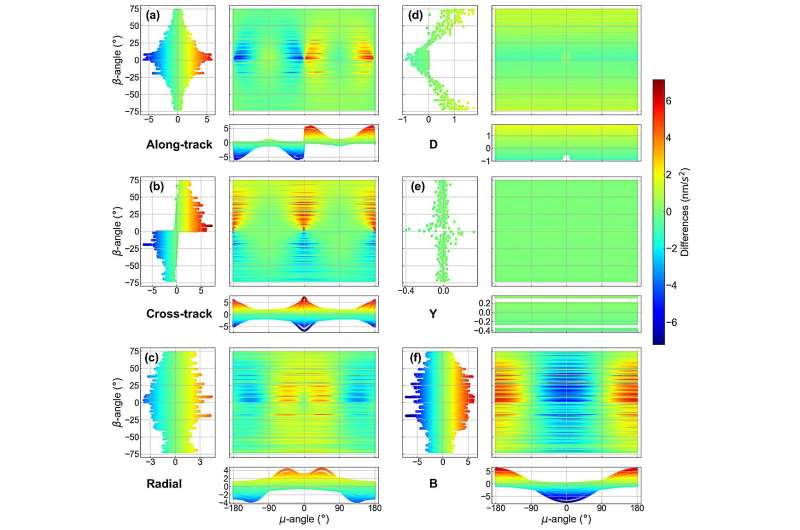This article has been reviewed according to Science X's editorial process and policies. Editors have highlighted the following attributes while ensuring the content's credibility:
fact-checked
proofread
The impact of inter-satellite links on the ECOM model performance for BDS‑3 MEO satellites

Inter-satellite link (ISL) plays an essential role in current and future Global Navigation Satellite System (GNSS). A recent study, conducted by Wuhan University's GNSS Research Center and published in Satellite Navigation in May 2024, explored the significant effect of ISL data on the orbital characteristics of the BDS-3 MEO satellites.
From the external quality analysis, ISL significantly enhances the reliability of the orbit of MEO satellites manufactured by the China Academy of Space Technology (CAST).
Additionally, the sun-elongation angle dependent systematic error in SLR residuals nearly vanishes based on the reduced 5-parameter ECOM (ECOM1) or extended 7-parameter ECOM (ECOM2) with ISL data. This is because the ISL reduces the correlation between state parameters and solar radiation pressure (SRP) parameters as well as those among SRP parameters, leading to a more accurate estimation of both orbit and SRP perturbations, particularly those along B direction.
This confirms that the deficiency of the SRP models for BDS-3 CAST satellites can be compensated by using better observation geometry from ISL data. On the other hand, for the satellite manufactured by Shanghai Engineering Center for Microsatellites (SECM), the ISL allows for a more accurate estimation of the Bc1 parameter in the ECOM1 model. This only reduces linear systematic error, possibly because the impact generated by the satellite bus cannot be entirely absorbed by the B-direction parameters.
This study provides a new perspective to view the SRP perturbation. Considering that future GNSS constellations will consist of LEO satellites and optical ISLs will be used, more accurate dynamic models and contribution from better geometry can be expected.
More information: Chao Yang et al, Impacts of inter-satellite links on the ECOM model performance for BDS-3 MEO satellites, Satellite Navigation (2024). DOI: 10.1186/s43020-024-00131-y
Provided by Aerospace Information Research Institute, Chinese Academy of Sciences





















